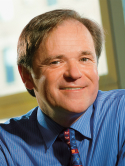DNA double-strand repair by nonhomologous end joining and its clinical relevance Book Section
| Authors: | Setton, J.; Bindra, R. S.; Powell, S. N. |
| Editors: | Kelley, M. R.; Fishel, M. L. |
| Article/Chapter Title: | DNA double-strand repair by nonhomologous end joining and its clinical relevance |
| Abstract: | Emerging evidence indicates that nonhomologous end joining (NHEJ) is comprised primarily of canonical NHEJ and alternative NHEJ (or noncanonical NHEJ) pathways. The former pathway results in minimal processing of the DSB ends, whereas the latter process typically results in insertions and deletions, with or without local sequence microhomology. Canonical NHEJ is considered the major pathway for the repair of DSBs induced by ionizing radiation in human cells. Noncanonical NHEJ was initially thought of as a "backup" pathway, since it first was discovered in cNHEJ-deficient cells. More recent studies, however, suggest that it may actively compete with both canonical NHEJ and homologous recombination (HR). In this chapter we review the current understanding of the basic mechanisms and regulation of the NHEJ subpathways, highlighting those insights with clinical implications. We also present potential opportunities in which NHEJ inhibition may be utilized for selective tumor cell targeting. © 2016 Elsevier Inc. All rights reserved. |
| Keywords: | dsb repair; nonhomologous end joining (nhej); alternative nhej; canonical nhej; classical nhej; microhomology-mediated nhej; noncanonical nhej |
| Book Title: | DNA Repair in Cancer Therapy: Molecular Targets and Clinical Applications. 2nd ed |
| ISBN: | 978-0-12-803582-5 |
| Publisher: | Elsevier Inc. |
| Publication Place: | Amsterdam, Netherlands |
| Date Published: | 2016-01-01 |
| Start Page: | 277 |
| End Page: | 302 |
| Language: | English |
| DOI: | 10.1016/b978-0-12-803582-5.00009-7 |
| PROVIDER: | scopus |
| DOI/URL: | |
| Notes: | Book Chapter: 9 -- Export Date: 3 October 2016 -- Source: Scopus |
Altmetric
Citation Impact
BMJ Impact Analytics
Related MSK Work




